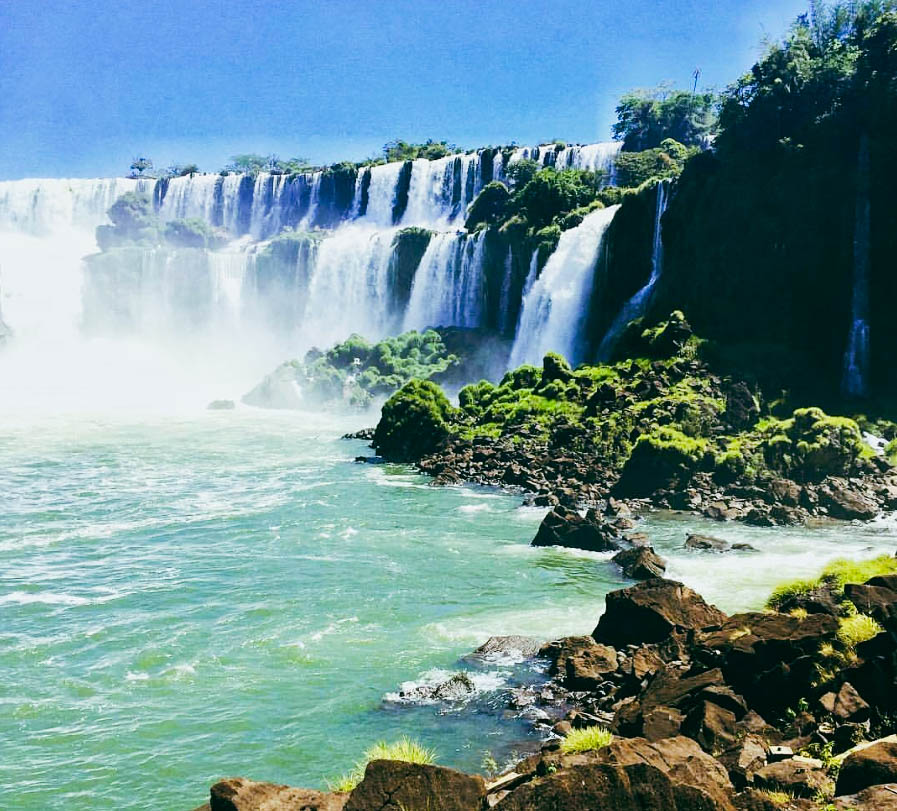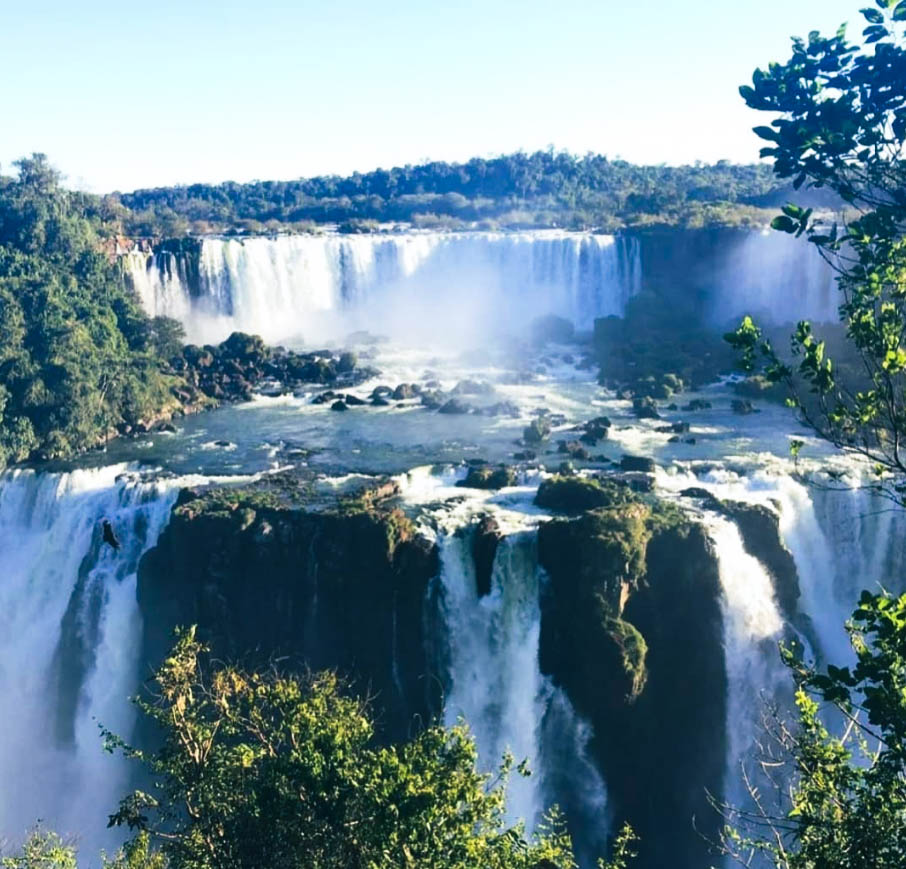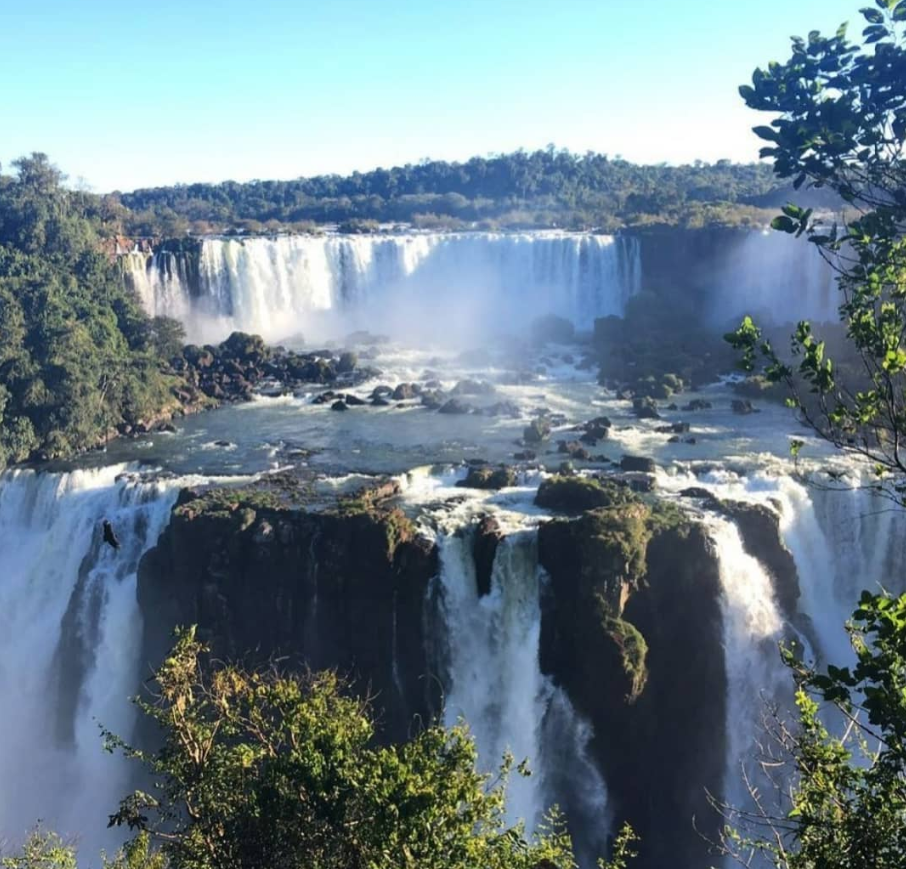Discover Iguazu Falls’ Heritage Value
Why Iguazu Falls Is a UNESCO World Heritage Site: A Journey into Nature’s Majesty
Introduction: Exploring Iguazu Falls’ Global Significance

Discover Iguazu Falls’ Heritage Value
Iguazu Falls, designated as a UNESCO World Heritage Site, showcases a spectacular network of 275 waterfalls extending across the borders of Argentina and Brazil. With its remarkable ecological importance and towering splendor, these falls provide a captivating window into the planet’s natural marvels. This article explores the distinctive features that set Iguazu Falls apart on a global scale, encompassing its impressive stature, rich biodiversity, and significant cultural significance. , a UNESCO World Heritage Site, is a breathtaking system of 275 waterfalls spanning Argentina and Brazil. Known for its ecological significance and towering beauty, the falls offer an awe-inspiring glimpse into Earth’s natural wonders. In this article, we delve deeper into what makes Iguazu Falls globally unique, including its height, ecological richness, and cultural importance.
The UNESCO Designation: What Sets Iguazu Falls Apart?
Iguazu Falls was recognized by UNESCO for its geological, ecological, and cultural significance. Argentina’s Iguazú National Park received its designation in 1984, while Brazil’s Iguaçu National Park followed in 1986. The falls are lauded for their unparalleled natural beauty and the thriving subtropical ecosystem they sustain.
What Makes Iguazu Falls Unique?
Height and Scale: Iguazu Falls boasts a staggering height of up to 82 meters (269 feet) at its highest point, with an average height of around 60 meters (197 feet). The system spans 2.7 kilometers (1.7 miles) in width.Volume and Force: The falls discharge up to 12,750 cubic meters of water per second during peak flow. Biodiversity Hotspot: The surrounding rainforest supports over 2,000 plant species and numerous rare animals. Cultural Relevance: Indigenous Guarani communities have revered the falls for centuries, considering them sacred. The Devil’s Throat: Iguazu’s Most Iconic Attraction The Devil’s Throat (Garganta del Diablo) is the tallest and most dramatic waterfall in the system.
Height: It plunges an incredible 82 meters (269 feet).Width: The U-shaped chasm stretches over 150 meters (490 feet) wide and 700 meters (2,300 feet) long.Experience: The roar of the cascading water and the dense mist create an unparalleled sensory experience. Visitors can view it from elevated walkways or boat tours.Geology: How Were Iguazu Falls Formed? Iguazu Falls formed approximately 150 million years ago due to volcanic activity and tectonic shifts. The basalt rock layers, combined with erosion, created the striking cliffs and cascading waterfalls visible today.

Biodiversity at Iguazu Falls: A Living Laboratory
- Flora: Iguazu Falls is home to orchids, bromeliads, palms, and a dense canopy of ferns. Rare plants thrive in the nutrient-rich soil and humid conditions. Fauna: The region is home to jaguars, howler monkeys, caimans, toucans, and colorful butterflies, including the famous morpho butterfly. Endangered Species: Iconic species like the giant otter and the harpy eagle find sanctuary in the national parks.A Cross-Border Experience: Argentina vs. Brazil Each country offers unique perspectives and attractions:
- Argentina Side: Features extensive trails and platforms for close-up encounters, including the Devil’s Throat walkway.
- Brazil Side: Provides panoramic views that showcase the falls’ scale and grandeur. Helicopter tours are also available for aerial views.

Height Comparison: Iguazu Falls vs. Other Famous Waterfalls
- Iguazu Falls: Up to 82 meters (269 feet)
- Niagara Falls: 51 meters (167 feet)
- Victoria Falls: 108 meters (354 feet)
How Tourism Supports Conservation at Iguazu Falls
Tourism plays a critical role in preserving Iguazu Falls:
- Revenue for Conservation: Park entry fees support wildlife protection and ecosystem management
- Education: Visitor centers educate tourists about the importance of sustainable tourism
- Community Engagement: Local communities benefit from eco-tourism jobs and cultural exchanges
Travel Tips for Exploring Iguazu Falls
Planning a trip to Iguazu Falls? Here are essential travel tips to make your adventure seamless and unforgettable:
When to Visit Iguazu Falls
- Best Seasons: March to May and September to November offer ideal weather with moderate crowds. The lush greenery and abundant water flow make these months perfect for exploration.
- Rainy Season: From December to February, water levels are high, creating an even more dramatic display, but be prepared for heavy rainfall and humidity.
- Dry Season: June to August provides cooler weather and smaller crowds but slightly lower water flow.
Where to Stay Near Iguazu Falls
- Argentina Side: Puerto Iguazú offers a range of accommodations, from budget-friendly hostels to luxury lodges. Staying here gives you closer access to most trails.
- Brazil Side: Foz do Iguaçu features panoramic views and upscale resorts, as well as proximity to additional attractions like Itaipu Dam.
- Inside the Parks: Some eco-lodges and high-end hotels are located within the national parks, offering exclusive access to the falls outside regular hours.
Packing Essentials for Your Trip
- Comfortable Shoes: Choose waterproof hiking boots or sturdy walking shoes for navigating trails and walkways.
- Rain Gear: Bring a lightweight raincoat or poncho to stay dry from the mist.
- Insect Repellent: Protect yourself from mosquitoes, especially in the rainforest areas.
- Reusable Water Bottle: Stay hydrated while exploring the park.
- Camera or Smartphone: Capture the stunning views, but ensure your gear is waterproof or protected by a case.

Top Activities at Iguazu Falls
- Devil’s Throat Walkway: Experience the falls’ power and hear the roar up close.
- Boat Rides: Take a thrilling ride into the falls’ spray for an unforgettable adventure.
- Helicopter Tours: Get a bird’s-eye view of the falls and surrounding rainforest (available on the Brazil side).
- Eco-Trails: Explore the subtropical jungle on guided tours and spot wildlife like toucans and monkeys.
Exploring the Argentina and Brazil Sides
- Argentina Side: Offers immersive experiences with trails that take you right to the falls. The Upper and Lower Circuits and the Devil’s Throat are must-visits.
- Brazil Side: Provides panoramic views and shorter walking trails. It’s perfect for capturing the full scale of Iguazu Falls in photographs.
Accessibility Tips for Travelers
- Wheelchair Accessibility: Both parks have wheelchair-friendly walkways, particularly on the Brazil side. Electric carts are also available for assistance.
- Family-Friendly Features: Bring strollers for young children; many trails are stroller-accessible.
How to Visit Iguazu Falls
Visiting Iguazu Falls is a once-in-a-lifetime experience, and careful planning ensures you make the most of your trip. Here’s everything you need to know about getting there and navigating the falls:
Getting to Iguazu Falls
By Air
- Argentina Side (Puerto Iguazú): Fly into Cataratas del Iguazú International Airport (IGR), located 20 minutes from the park. Direct flights are available from Buenos Aires and other major cities.
- Brazil Side (Foz do Iguaçu): Land at Foz do Iguaçu International Airport (IGU), approximately 25 minutes from the park. Flights from São Paulo, Rio de Janeiro, and other hubs connect here.
By Bus
- Long-distance buses connect Puerto Iguazú and Foz do Iguaçu with cities across Argentina and Brazil. These are economical and offer scenic views of the region.
By Car
- Argentina Side: Rent a car in Puerto Iguazú for flexibility. Ample parking is available near the park entrance.
- Brazil Side: Self-driving is also convenient, with well-marked roads leading to the park.
Park Entrances and Fees
Argentina Side
- Entry point is at Parque Nacional Iguazú. Tickets can be purchased online or at the gate. Discounts are available for multiple-day visits.
- Open daily from 8 AM to 6 PM.
Brazil Side
- Entrance is through Parque Nacional do Iguaçu. Tickets include access to the scenic trails and shuttle services.
- Operating hours are 9 AM to 5 PM.
Crossing the Border Between Argentina and Brazil
If you plan to visit both sides, ensure you have:
- Valid Passport: Required for border crossings.
- Visas (if applicable): Check entry requirements based on your nationality.
- Transportation: Shuttle buses, taxis, and private tours operate between the two sides.
Navigating Inside the Parks
Argentina Side
- Upper Circuit: Offers breathtaking views from above the falls.
- Lower Circuit: Leads to misty viewpoints at the base of the falls.
- Devil’s Throat Walkway: A train ride and a 1-kilometer walk bring you to the most iconic viewpoint.
Brazil Side
- A single trail winds along the cliff edge, offering panoramic views.
- The finale is a platform at the Devil’s Throat, where you feel the immense power of the falls.
Transportation Options Within the Parks
- Argentina Side: A train system runs between main points like the park entrance, Cataratas Station, and Devil’s Throat.
- Brazil Side: Shuttle buses are included with your ticket and operate throughout the park.
Guided Tours and Packages
- Local Guides: Enhance your experience with insights into the park’s ecology and history.
- Multi-Day Packages: Include accommodation, meals, and transportation for stress-free planning.





